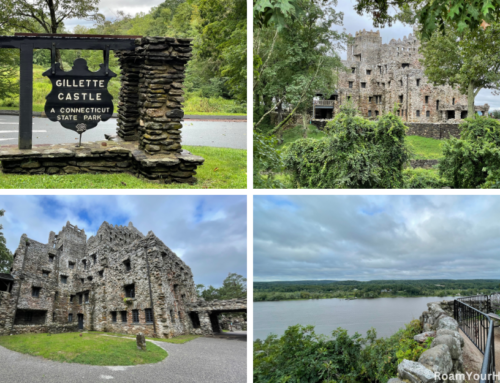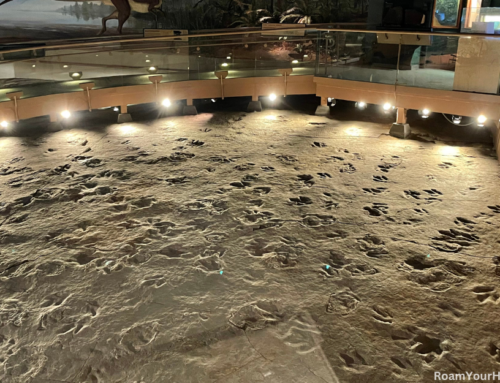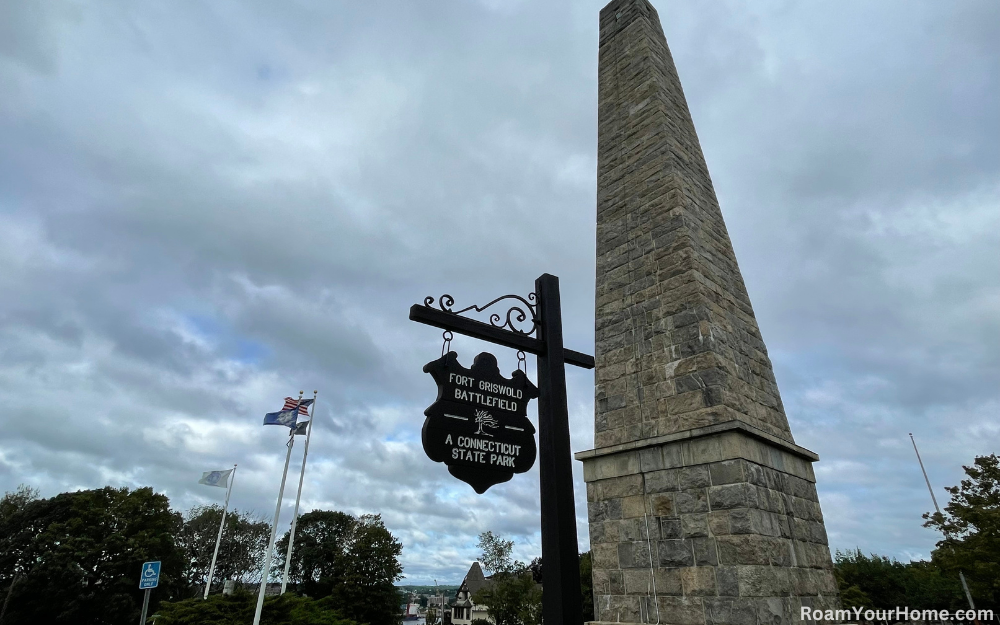
Fort Griswold Battlefield State Park: Revolutionary War massacre
Fort Griswold Battlefield State Park is located in Groton, Connecticut, about an hour from New Haven and Hartford. The park preserves the site of the Revolutionary War Battle of Groton Heights, sometimes referred to as the Fort Griswold massacre.
Battle of Groton Heights
The Battle of Groton Heights was the last major fight in the northern United States. It was followed some six weeks later by Lord Cornwallis’s surrender at Yorktown. There was such outrage over what had happened in Connecticut that Marquis de Lafayette reportedly yelled, “Remember Fort Griswold!” as American and French forces stormed the British at Yorktown. Because of the significance of the surrender at Yorktown, the Battle of Groton Heights is often overlooked and unknown to many. That said, September 6th, 1781, still captivates thousands of visitors to the small Connecticut park.
On that September day in 1781, about 1,700 troops under the command of traitor and now British General Benedict Arnold were ordered to conduct raids on Connecticut. The hope was to distract and divert George Washington’s Continental Army from heading south to attack Lord Cornwallis in Virginia. Sailing up the Thames River, the British quickly came to Fort Turnbill on the western banks and Fort Griswold on the eastern banks. Arnold split his force, with him personally commanding about 800 troops and quickly seizing Fort Turnbull, Town Hill.
Another 800 under the command of British Colonel Edmund Eyre were ordered to seize Fort Griswold. While Arnold and his men were met with little resistance across the river, Colonel Eyre would not be so lucky.
Fort Griswold had about 165 militia under the command of Colonel William Ledyard. As Colonel Eyre’s men marched towards the fort, they repeatedly asked for surrender under a flag truce. After repeated refusals, Eyre announced “no quarter” would be given to the fort’s defenders. Colonel Ledyard responded in the face of death, “We will not give up the fort; let the consequences be what they may.”
The British attacked but were driven back two times with heavy casualties, including Colonel Eyre. During a brief lull in the fighting following the second assault, the American Flag was shot from its halyard. It was hastily remounted on a pike pole, but the British took this as a signal of surrender. The Red Coats advanced again, only to be fired up one more. This third assault would prove successful, with the British troops opening a gate and pouring in.
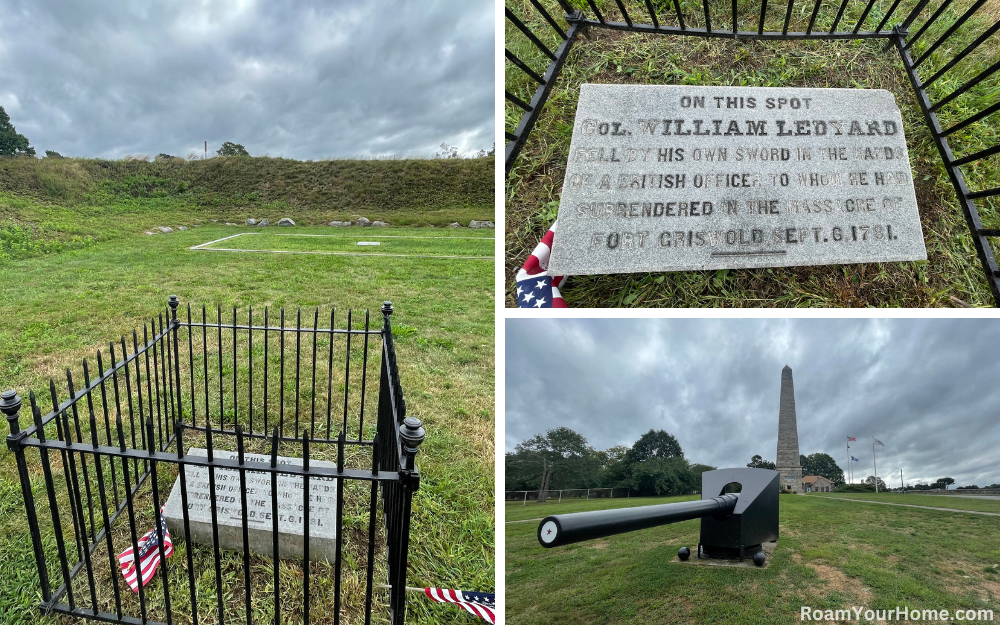
Troops were massacred at Fort Griswold.
It’s said that Colonel Ledyard realized his men were about to be overwhelmed and ordered a surrender. It’s believed despite this, some colonists continued firing. When surrendering to the British, the Commanding officer took the sword and ran Ledyard through with his own sword, killing him. The troops trapped inside the fort were slaughtered. When the fighting ended, 85 Americans were killed and 36 wounded. The traitor Benedict Arnold would go down in history as being responsible.
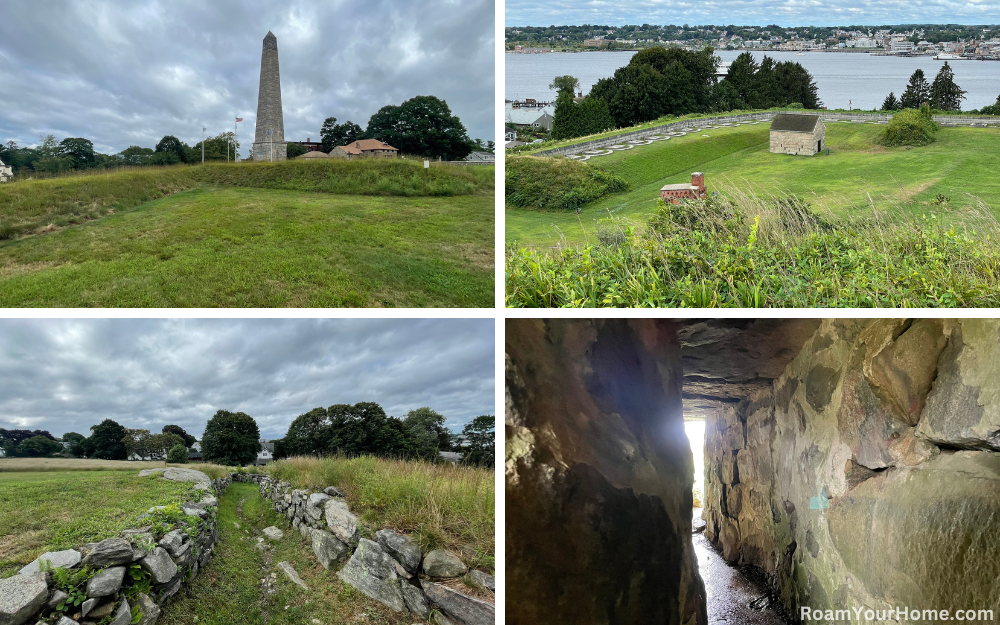
Visiting Fort Griswold Battlefield State Park
Today, a stone monument is inside a small fence marking where Colonel Ledyard was killed. There is much to do during your visit to the park. You can check out restored earthworks, batteries, cannons, a shot furnace, and a powder magazine. We spent nearly two hours visiting the park.
The 135-foot granite Groton Monument was finished in 1830 and was America’s first patriotic obelisk-style monument. The adjacent Monument House Museum is also worth a stop and features many objects from the battle and time period. Visitors can climb the monument and visit the museum from Memorial Day through Labor Day.
The location was maintained as a military site through WWII and became a Connecticut State Park in 1953.
Things to see nearby
Other Benedict Arnold History
Colburn House State Historic Site in Maine.

